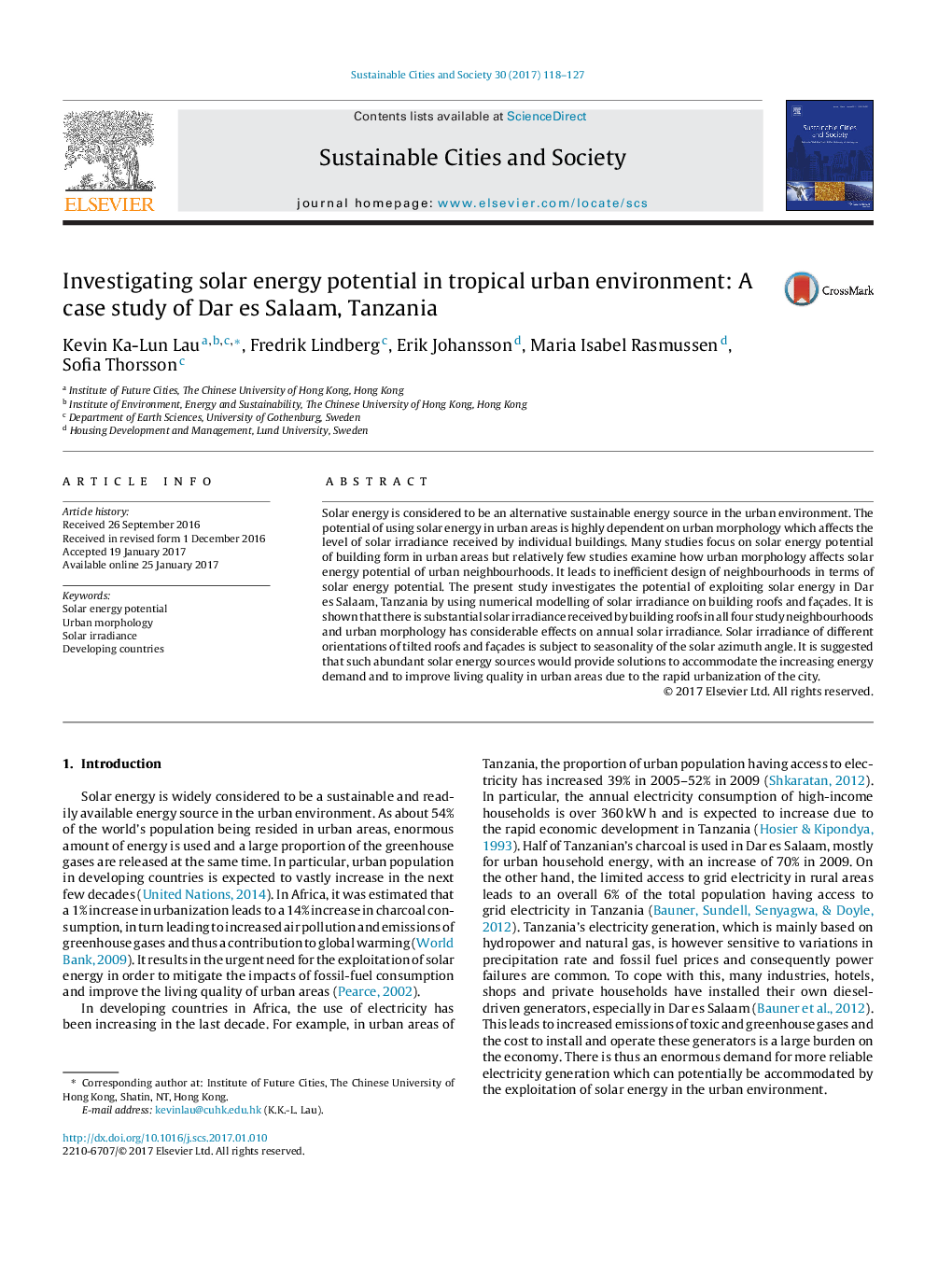| Article ID | Journal | Published Year | Pages | File Type |
|---|---|---|---|---|
| 4928145 | Sustainable Cities and Society | 2017 | 10 Pages |
Abstract
Solar energy is considered to be an alternative sustainable energy source in the urban environment. The potential of using solar energy in urban areas is highly dependent on urban morphology which affects the level of solar irradiance received by individual buildings. Many studies focus on solar energy potential of building form in urban areas but relatively few studies examine how urban morphology affects solar energy potential of urban neighbourhoods. It leads to inefficient design of neighbourhoods in terms of solar energy potential. The present study investigates the potential of exploiting solar energy in Dar es Salaam, Tanzania by using numerical modelling of solar irradiance on building roofs and façades. It is shown that there is substantial solar irradiance received by building roofs in all four study neighbourhoods and urban morphology has considerable effects on annual solar irradiance. Solar irradiance of different orientations of tilted roofs and façades is subject to seasonality of the solar azimuth angle. It is suggested that such abundant solar energy sources would provide solutions to accommodate the increasing energy demand and to improve living quality in urban areas due to the rapid urbanization of the city.
Related Topics
Physical Sciences and Engineering
Energy
Renewable Energy, Sustainability and the Environment
Authors
Kevin Ka-Lun Lau, Fredrik Lindberg, Erik Johansson, Maria Isabel Rasmussen, Sofia Thorsson,
